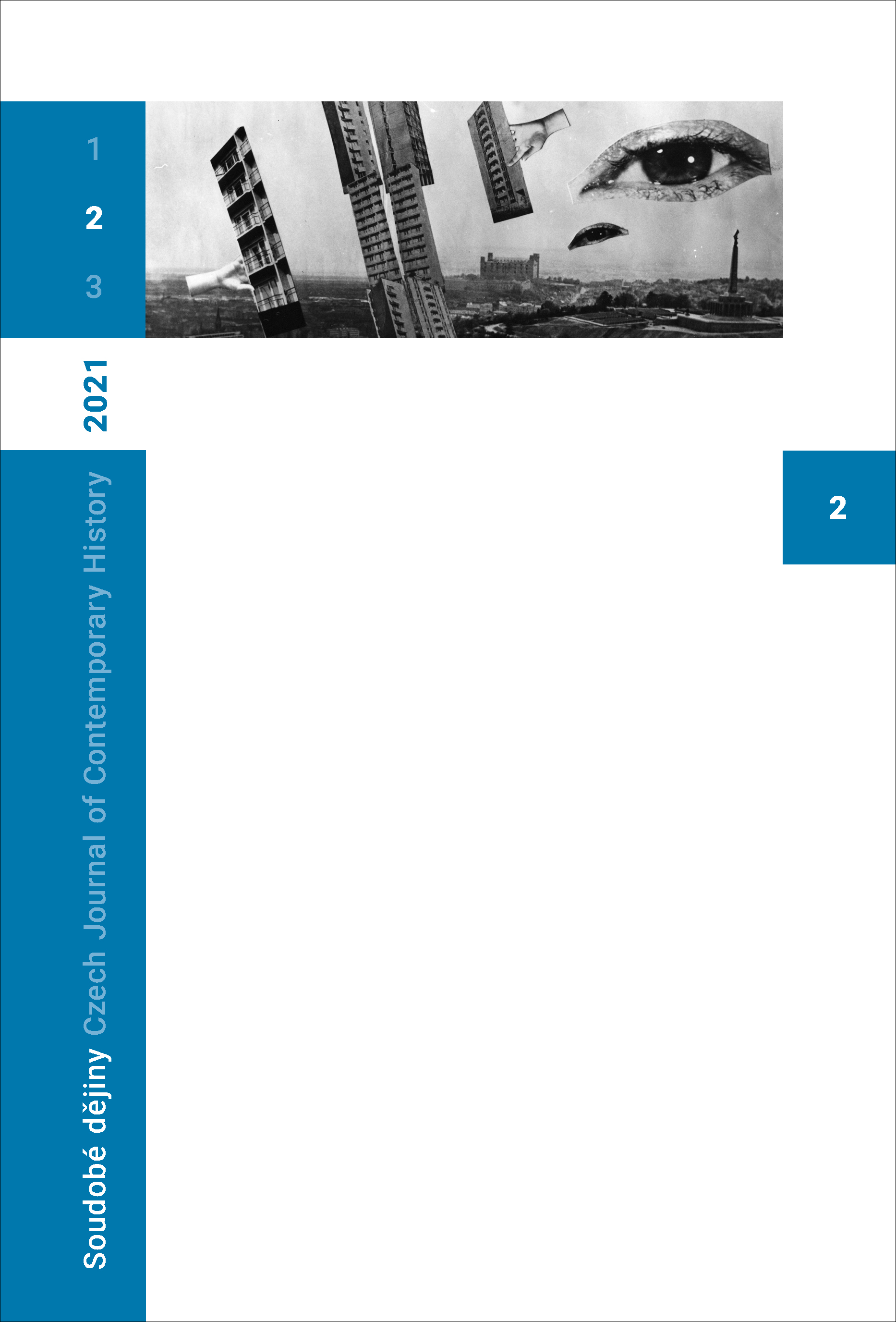Kolektivní násilí v českých zemích jako způsob vládnutí
Collective Violence in the Czech Lands as a Way of Governance
Author(s): Jakub StřelecSubject(s): Cultural history, Ethnohistory, Social history, WW II and following years (1940 - 1949), Fascism, Nazism and WW II, Book-Review
Published by: AV ČR - Akademie věd České republiky - Ústav pro soudobé dějiny
Keywords: Czech lands;Czechoslovakia;collective violence;governance;Protectorate of Bohemia and Moravia;Third Czechoslovak Republic;German occupation;Nazi terror;Post-War;resettlement of Germans
Summary/Abstract: Jaromír Mrňka’s monograph entitled "Limity lidskosti: Politika a sociální praxe kolektivního násilí v českých zemích 1944–1946" [Limits of Humanity: Politics and Social Practice of Collective Violence in the Czech Lands, 1944–1946] (Prague, Ústav pro studium totalitních režimů 2019) focuses on the social practice of collective violence in the Czech lands in the last months of German occupation and the first months of liberated Czechoslovakia. The author portrays the Czech lands in this period as a space of uncontrolled violence, which was committed by different actors and related, first, mainly to the Nazi terror during the death marches, death transports and anti-partisan operations, and after the war, chiefly to the forced resettlement of a German-speaking population and the restoration of state power in the borderlands. The reviewer appreciates the fact that the author examines the acts of collective violence both from the perspective of macrostructural preconditions and state policy, and microstructural analysis of individual violent excesses and their dynamics. His research is also based on the concept of “long 1940s”, that is the period from the outbreak of the Great Depression to the beginning of de-Stalinization, which was characterized by the use of collective violence as an instrument of state policy. What is important is the conclusion that the violent actions were not just random outbursts of individual anger, but represented an extreme form of governance which aimed at transforming the national and social structure of Czechoslovak society in the post-war period.
Journal: Soudobé Dějiny
- Issue Year: XXVIII/2021
- Issue No: 2
- Page Range: 547-554
- Page Count: 8
- Language: Czech

